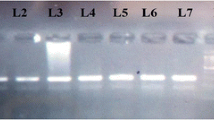Abstract
To study the role played by hepatic bile mucus glycoprotein in the development of hepatolithiasis, mucus glycoprotein, isolated from the bile of patients with intrahepatic gallstones by gel filtration and ultracentrifugation, was examined for precipitability in control hepatic bile obtained postopertively from patients successfully treated for cholecysto-and/or choledocho-lithiasis. When the mucus glycoprotein was incubated at 38°C for 48h in the control hepatic bile in the presence of calcium inons, massive precipitation was produced. The precipitation was inhibited by treating the mucus glycoprotein with acid, alkali, a reducing reagent, or protease, the inhibition being most effective with acid, which splits up carbohydrate chains. This suggests that the precipitability of the mucus glycoprotein resides mainly in its carbohydrate chains. These observations imply that the development of intrahepatic gallstones, calcium bilrubinate stones in particular, could be prevented by degrading mucus glycoprotein in hepatic bile.
Similar content being viewed by others
References
Nakayama F, Koga A, Ichimiya H, et al. Hepatolithiasis in East Asia: Comparison between Japan and China. J Gastroenterol Hepatol. 1991;6:155–158.
Maki T. Pathogenesis of calcium bilirubinate gallstone: Role of E. coli, β-glucuronidase and coagulation by inorganic ions, polyelectrolytes and agitation. Ann Surg 1966;164:90–100.
Sasaki M, Takahashi K, et al. Role of bile glycoprotein in intraheptic calculus formation. Nippon Geka Gakkai Zasshi (J Jpn Surg Soc) 1989;90:258–266. (in Japanese).
Yamasaki T, Nakayama F, Tamura S, et al. Characterization of mucin in the hepatic bile of patients with intrahepatic pigment stones. J Gastroenterol Hepatol 1992;7:36–41.
Dubois M, Gilles KA, Hamilton JK, et al. Colorietric method for determination of sugars and realted substances Anal Chem 1956;28:350–356.
Laemmli UK. Cleavage of structural proteins during the assembly of the head of bacteriophagfe T4. Nature 1970;227:680–685.
Spackman DH, Stein W.H, Moore S. Automatic recording apparatus for use in the chromatography of amino acids. Anal Chem 1958;30:1190–1206.
Suzuki J, Kondo A, Kato I, et al. Analysis by high-performance anion-exchange chromatography of component sugars as their fluorescnet pyridylamino derivatives. Agric Biol Chem 1991; 55:283–284.
Takemoto H, Hase S, Ikenaka T, et al. Microquantitative analysis of neutral and amino sugars as fluorescent pyridylamino derivatives by high-performance liquid chromatography. Anal Biochem 1985;145:245–250.
Warren L. The thiobarbituric acid assay of sialic acids. J Biol Chem 1959;234:1971–1975.
Terho TT, Hartiala K. Method for determination of the sulfate content of glycosaminoglycans. Anal Biochem 1971;41:471–476.
Carlson DM. Structures and immunochemical properties of ologosaccharides isolated from pig submaxillary mucins. J Biol Chem 1968;243:616–626.
Spee-Brand R, Strous GJAM, Kramer MF. Islation and partial characterization of rat gastric mucous glycoprotein. Biochim Biophys Acta 1980;621:104–116.
Person JP, Kaura RAJ, Taylor W, et al. The composition and polymeric structure of mucus glycoprotein from human gallbladdr bile. Biochim Biophys Acta 1982;706:221–228.
Smith BF, LaMont JT. Hydrophobic binding properties of bovine gallbaladder mucin. J Biol Chem 1984;259:12170–12177.
Houdret N, Ramphal R, et al. Evidence for the in vivo degradation of human respiratory mucins duringPseudomonas aeuginosa infection. Biochim Biophys Acta 1989; 992:96–105.
Rona SS, Chandrasekaran EV, Mendicino J. Structures of the sialylated oligosaccharide chains in swine trachea mucin glycoprteins. J Biol Chem 1987;262:3654–3659.
Mawhinney TP, Adelstein E, Gayer DA, et al. Structural analysis of monosulfated side-chain oligosaccharides isolated from human tracheobronchial mucous glycoproteins. Carbohydr Res 1992;223:187–207.
Author information
Authors and Affiliations
Rights and permissions
About this article
Cite this article
Akaishi, S., Yoshihara, S., Sasaki, M. et al. Possible role of hepatic bile mucus glycoprotein in development of intrahepatic gallstones. J Gastroenterol 30, 758–763 (1995). https://doi.org/10.1007/BF02349643
Received:
Accepted:
Issue Date:
DOI: https://doi.org/10.1007/BF02349643




